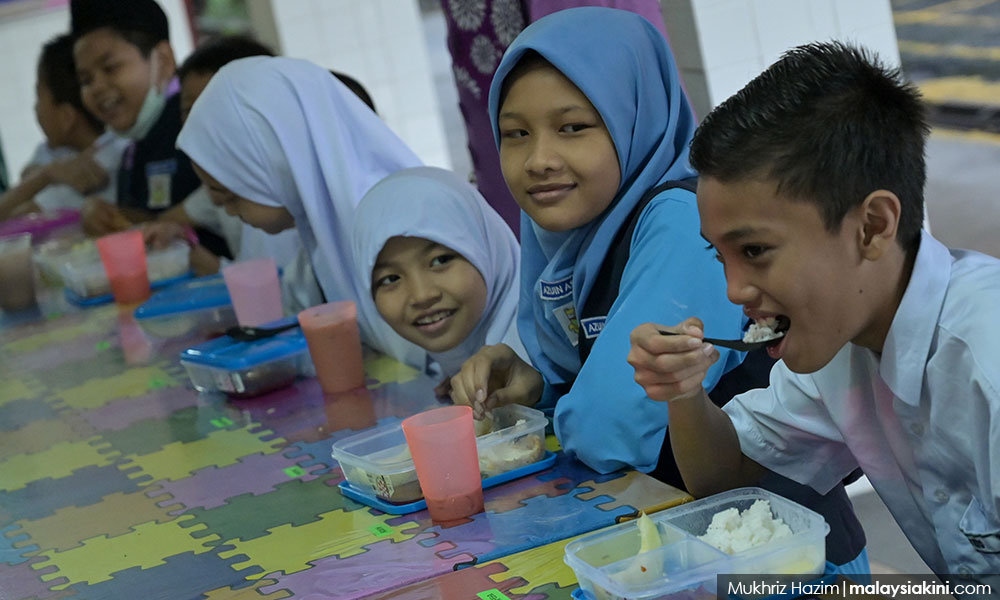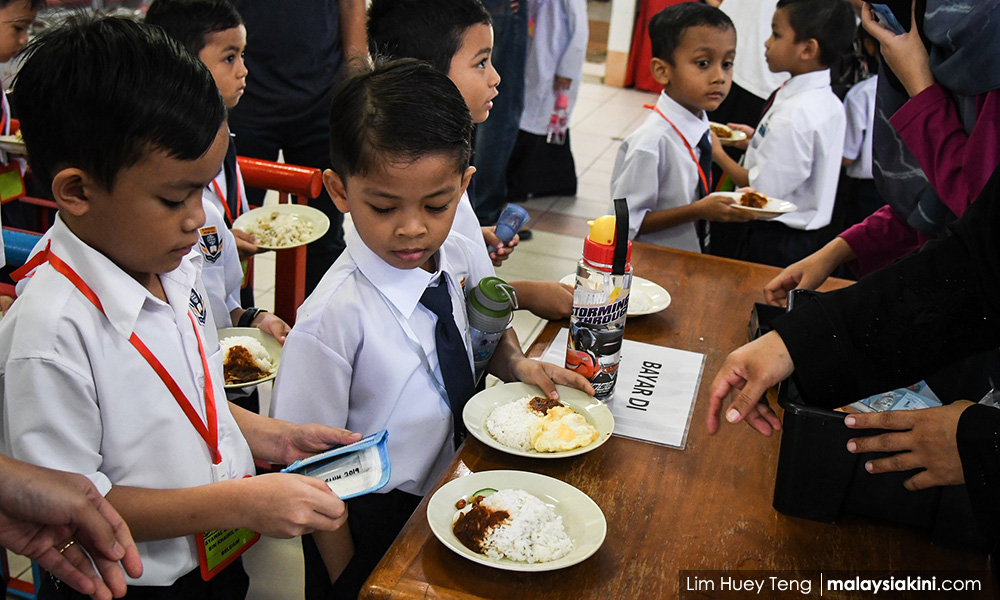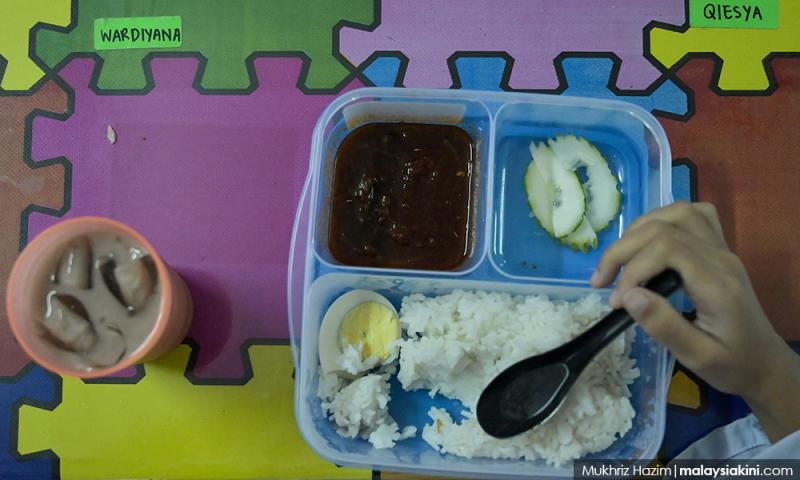Free breakfast programme - beyond just an eating affair
LETTER | When Maszlee Malik, the former Education Minister, announced in August last year that a school breakfast programme will begin in January 2020 providing free meals to all students in primary public schools, I very much welcomed the initiative. As a working mother to schooling children, one of the parenting concerns I constantly have is about my children’s food intake at school.
Despite the issuance of the Healthy School Canteen Management Guide to curtail the sale of unhealthy food and beverages to students, items such as sausages, chicken nuggets and carbonated drinks can still be found in school canteens. School authorities have also not been successful in banning the sale of junk foods outside the school compounds. Despite my repetitive reminders to my children not to buy those foods, unconducive school setting certainly is not helping while peer pressure could influence them in a direction I wish not to steer.
The idea that nutritious meals will be served at school would relieve me from preparing packed meals as I struggle to balance the double burden of work - at home and the workplace. In my view, a feeding programme that is more educational rather than simply an eating affair is a great way to teach children the importance of a healthy diet and cultivate good eating habits.
A faltered grand plan?
Uncertainties over the funding of the programme - estimated to cost between RM1.5 - RM2.0 billion annually - saw the aspiration of the former minister remains unrealised. The latest version of the feeding programme launched recently appeared to be a mere extension of the Supplementary Feeding Programme, otherwise known as Rancangan Makanan Tambahan (RMT). Although the coverage has slightly expanded to include more underprivileged students and meals are served before the school session begins (instead of during recess), other aspects of the programme remain the same as RMT.
Malnutrition – a problem regardless of class
The RMT - introduced in 1979 when the poverty rate was still high in this country - targets children from poor families and aims to address undernutrition (stunting, underweight, wasting) and classroom hunger (a situation where children study on an empty stomach). With proper eating, students are expected to be healthier, less likely to be absent from school and perform better in classes.

Undeniably, RMT has achieved much over the years with the most notable impact being the reduction in the protein-energy malnutrition among poor children. However, a feeding programme that solely targets the poor runs the risk of excluding those with real nutrition needs. As Malaysia becomes more developed, our nutritional challenges have involved not only from undernutrition but also obesity and micronutrient deficiencies, leading to higher diet-related noncommunicable diseases (NCDs) such as diabetes and heart diseases.
Based on the National Health and Morbidity Surveys (NHMS), 1-in-10 children aged below five were found to be either wasted or stunted in 2015; whereas 1-in-3 school-going children aged 10-17 were overweight or obese in 2017. While undernutrition is arguably more concentrated amongst the poor, the opposite is likely the case for overeating and obesity, making malnutrition a problem that cuts across all income classes.
From “welfare” to “social investments”
Continual associations of the school feeding programme with overcoming hunger among poor children distort us from recognising its immense potentials in building a healthy and stronger nation in the long term. In Japan, for example, a nationwide school lunch programme has been instrumental in promoting good health for its citizens. Among Organization for Economic Cooperation and Development (OECD) countries, Japan records a longer life expectancy and lower obesity rate, and scores high in child nutrition and health indicators.
Concerns about wastage from leftover foods, while not unfounded, can be addressed if the menus are thoughtfully designed to be nutritious yet appetising. Unfortunately, it is typical that programmes meant “to benefit the poor” tend “to give poor benefits”, and RMT is not a unique case. If designed and implemented well, many parents would not mind paying for the programme instead of providing daily pocket money, as shown in the Program Hidangan Berkhasiat di Sekolah (HiTS) - a parents-funded pilot breakfast programme run by the Ministry of Health in 60 selected schools
The argument that it is “unfair (for the government) to give breakfast to the rich” fails to acknowledge that non-poor children could also go to school on an empty stomach due to parents’ time constraint to prepare breakfast early in the morning. NHMS data for 2017 shows that only 30 percent of students eat breakfast on a daily basis before going to school while the remaining either have breakfast irregularly (60 percent) or not at all (10 percent). Making breakfast available to all will ensure students are equipped with the necessary energy and nutrition to kickstart the day.
Even on the grounds of “fairness”, the number of very rich children can be counted in the public schools as they mostly attend private or international schools. Still, what I find more disturbing with this narrative of “fairness” is the way we are indoctrinating the young minds on “status” and class segregation, where kids are tagged with “rich” or “poor” labels.

Designing the programme as an exclusive benefit to the poor ignores stigmatisation faced by recipients which subsequently could hinder their participation. Some may choose to avoid the foods altogether out of fear of being looked down on for being poor. Making the meals available to all will promote equality as everyone enjoys the same meal, fosters social interaction and camaraderie among students.
A universal approach is also more sustainable when all members of the society are involved, including the middle and the upper class. Participations of higher-income groups can ensure continuous improvements to the programme since they generally command greater political influences hence would be able to drive change more effectively.
Coordination in execution
Beyond the returns on health, education and nation-building, feeding 2.7 million children daily present significant potentials that could benefit the local economy. With carefully designed procurement policies, the programme poses unique opportunities to advance local agriculture, safe food productions and promote entrepreneurship. However, this demands strong intersectoral coordination between the relevant ministries including the Ministry of Education, Ministry of Health, Ministry of Agriculture and Agro-based Industry, and Ministry of Entrepreneur Development and Cooperatives.
At the community level, stakeholders including teachers, parents, nutritionists as well as local farmers and food suppliers should work closely to prevent the programme from becoming another avenue to enrich parties with vested interests or being monopolised by big corporations.
More importantly, comprehensive monitoring and evaluation mechanisms must be in place to measure the programme’s impact and progress - a key factor that would ensure continuous financial and as non-financial support.
The views expressed here are those of the author/contributor and do not necessarily represent the views of Malaysiakini.
RM12.50 / month
- Unlimited access to award-winning journalism
- Comment and share your opinions on all our articles
- Gift interesting stories to your friends
- Tax deductable
